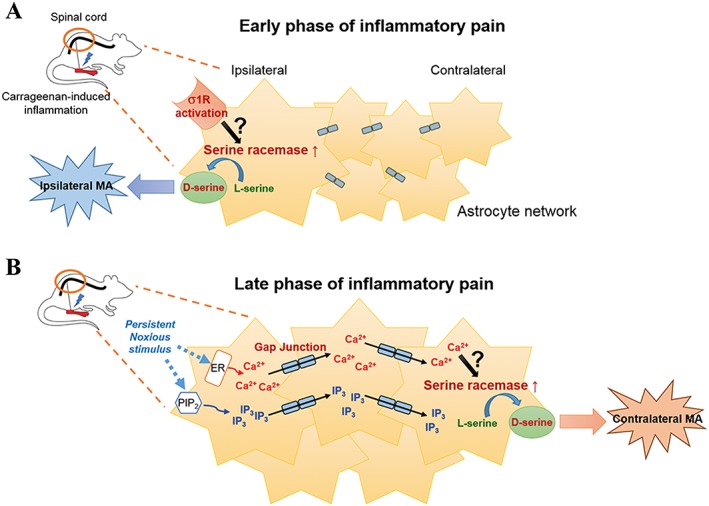Figure 8.

Schematic diagram summarizing the proposed mechanisms for D‐serine‐induced development of ipsilateral versus contralateral mechanical allodynia (MA) and modulation of astrocyte SeRa and D‐serine up‐regulation in carrageenan rats. (A) During the early phase of inflammation, activated ipsilateral spinal σ1 receptors up‐regulate the expression of SeRa and D‐serine, which contribute to the development of ipsilateral mechanical allodynia. (B) During the late phase of inflammation, the persistent ipsilateral noxious stimulation causes an increase in Ca2+ ion or IP3 concentration in ipsilateral astrocytes. This generates a wave of Ca2+ ions or IP3 spread (Ca2+ waves) to distant astrocytes through astrocytic gap junctions. The increased Ca2+ ion or IP3 concentration in contralateral astrocytes increases the expression of SeRa and results in increased D‐serine production. The up‐regulated contralateral D‐serine subsequently contributes to the development of contralateral mechanical allodynia.
